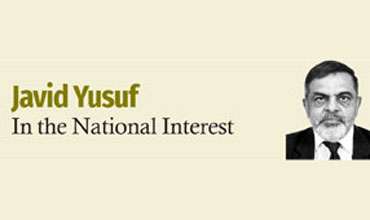The Pandemic Financing Developing Countries Need
By Rachel Glennerster
CHICAGO – Pandemic preparedness was on the agenda at last week’s Spring Meetings of the World Bank and the International Monetary Fund, held in Washington, DC, a little over four years after the World Health Organization declared COVID-19 a global pandemic. Millions of people died, and billions of dollars were spent in the intervening period, but some important lessons of the pandemic remain unlearned.
One glaring example is that low- and middle-income countries (LMICs) are still unable to invest in medical countermeasures before they are approved. The United States and the United Kingdom employed this “at-risk” strategy to great effect during the COVID-19 crisis. LMICs need the same opportunity.
When a pandemic strikes, governments must act swiftly and invest heavily in technological solutions that may be unproven. Expanding vaccine production when medical trials were ongoing, rather than waiting for regulatory approval, proved critical during the COVID-19 pandemic. The US and the UK, in particular, made early and substantial investments in developing and producing vaccines, securing doses at-risk. In exchange for bearing much of the risk of technological failure, these countries were first in line when the vaccines were found to be effective – a boon for their own citizens. But these investments also helped other countries by accelerating vaccine development and production.
At the time, I was working in the UK government, running analyses showing the cost-effectiveness of at-risk investment. America’s Operation Warp Speed, for example, which cost $13 billion as of December 2020, paid for itself if it shortened the pandemic by just 12 hours. Moreover, increased investment in production capacity could have sped up global vaccination efforts by a year, saving an estimated $1.75 trillion.
We clearly need to do better when the next pandemic strikes. This could move forward even without a coordinated global investment – a daunting challenge. Instead, our analysis showed that it would have been cost-effective for individual countries, including LMICs, to invest at-risk in expanded vaccine production during COVID-19. Vaccines would have been made available faster, fewer people would have died, and economies would have recovered sooner. (That said, high-income countries can and should take the lead in research and development spending, which does benefit from coordination.)
I spent much of the spring and summer of 2020 trying but failing to persuade LMICs to follow the UK’s lead; most of these countries did not purchase vaccines at-risk. A World Bank working paper found that 60-75% of the delay in COVID-19 vaccine deliveries to LMICs was attributable to their signing purchase agreements later than high-income countries. While it is undoubtedly difficult to do something new in a crisis, conversations with various stakeholders revealed two problems: politicians feared being accused of corruption if the vaccine failed, and institutions like the World Bank could not provide loans to purchase a vaccine that did not exist yet.
To overcome these problems, multilateral development banks (MDBs) must establish financing mechanisms to enable at-risk purchases in a pandemic, as well as mechanisms for high-income countries to de-risk these loans. Unlike the vaccine donations and pledges during COVID-19, which were too little too late, these measures would actually provide LMICs with sufficient resources to respond to the next pandemic.
When LMICs need to purchase vaccines, therapeutics, and diagnostics at the scale required to fight a pandemic, MDBs are their only realistic source of finance. But current procurement rules prevent purchasing these countermeasures at-risk. The rules must therefore be revised to allow for such purchases, in recognition of the unique challenges of a global health crisis. MDBs can also coordinate with stakeholders to create model procurement contracts and establish indemnity and liability frameworks to streamline processes and minimize delays.
High-income countries can help by guaranteeing these loans in case the vaccine candidates fail. This would reduce the financial risk for LMICs and alleviate politicians’ concerns about their potential liability. In exchange for this relatively modest burden on their balance sheets, high-income countries can facilitate significant investments that promise substantial global health benefits and large economic returns. During COVID-19, many of us in the UK government recognized that this was one of the most effective ways to use our limited aid money and even proposed such a measure, to no avail.
COVID-19 taught us that developing novel mechanisms in the midst of a pandemic is practically impossible. International policymakers must establish the necessary frameworks now to ensure that LMICs can purchase medical countermeasures at-risk in the next pandemic in order to shorten its duration and improve equitable access to health care. As our work at the University of Chicago’s Market Shaping Accelerator shows, any delay risks millions of lives and trillions of dollars.
Rachel Glennerster, Associate Professor of Economics at the University of Chicago, served as Chief Economist of the United Kingdom’s Foreign, Commonwealth, and Development Office during the COVID-19 pandemic.
Copyright: Project Syndicate, 2024.
www.project-syndicate.org
-
Still No Comments Posted.














Leave Comments